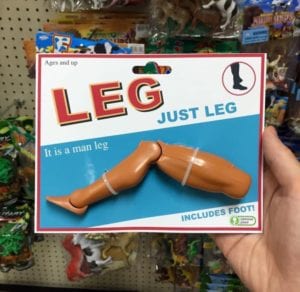
Ask any amputee, and they all will tell you that you can’t grow a new one. Making your Bodily Consciousness grow a new leg is the title of this article. The point of this article is that if you wear your prosthesis long enough, your consciousness will accept it as if it were a new leg. A prosthesis is simply a tool. It is an artificial replacement for a missing limb that can help you regain independence after your amputation. Choosing to use one, or not, depends on your personal goals.
The best prosthesis is one that will help you reach your former level of functioning. This is something you have to fight for. No one is going to do it for you. Start with some basic questions you should start with:
- What do you want to be able to do with the prosthesis?
- What activities do you plan to do?
- Do you want to walk or run?
- Do you care about the way it looks?
There is no one device that is best for everyone. Your prosthetist may not know of the latest designs. You have to do your research because no one is going to do it for you. Every one of these companies has a customer service liaison. They will work with you on getting a loaner and help you with your insurance.
I was very clear that I wanted to get back to swimming. I loved hiking and was always walking to where I wanted to go. My particular joy was walking on the beach and playing in the surf. As an avid scuba diver, I had accumulated over 200 hours underwater. I let my prosthetist know several times so he could not misinterpret my active lifestyle. What I got was a passive vacuum clunker that he warned me not to kneel on or get on the floor. So much for Yoga, which I did daily for twenty years!
Worse than that, I could not get a second prosthesis for three years! Your general practitioner is in charge of your amputation, and the chances are that he has no idea what he needs to do. He must justify your choice of the prosthesis to your insurance company. Your prosthetist needs to work with him in establishing your pre-amputation level of functioning. This means you need to contact your insurance company, get the necessary forms, and insist that both of these practitioners fill them out justifying your choice of prosthesis.
There is fear in each of the levels of recovery. Some amputees find a wheelchair or crutches are as far as they are willing to go. When you refuse to go out and about prevents you from standing on two feet. Agoraphobia is a fear of going outside your house. Limiting yourself to your wheelchair makes this a very probable psychological reaction to this level of recovery.
Make Your Bodily Consciousness Grow a New Leg
Ideally, an amputation saves your life, and using a prosthesis enriches your quality of life. If, after being fitted for a prosthesis, you choose not to use it, you never regain your former level of functioning. Studies have identified an initial critical stage among potential prosthetic users. You need to wear your prosthesis as much as possible, and you will find your bodily consciousness grows to make the amputee leg part of you. Dreaming of walking again is the same principle. That is why we strive to make our bodily consciousness grow a new leg.
Recent amputees find themselves in a state of in-between. They feel disconnected from their familiar previous life and not yet integrated into a new and different existence. In this limbo land, the newly amputated oscillates between experiences of victory and overwhelming fear. You must first separate the physical wobbles as you try to walk again from the psychological challenge.
Becoming a successful prosthetic user requires a high degree of stamina and resilience. Always keep in mind that the more you use your prosthesis the more it enriches your quality of life. The point of this article is that there is a window of opportunity after an amputation. Those who try in earnest to use their prostheses have a strong chance of regaining their pre-amputation functioning. This is what is meant by making your bodily consciousness grow a new leg.






